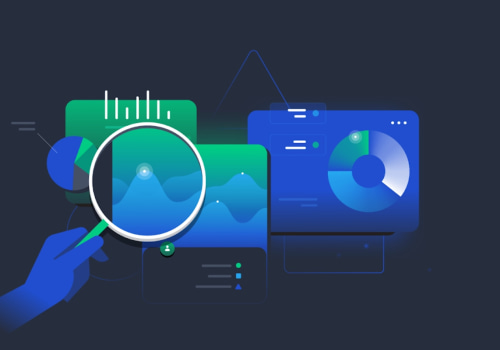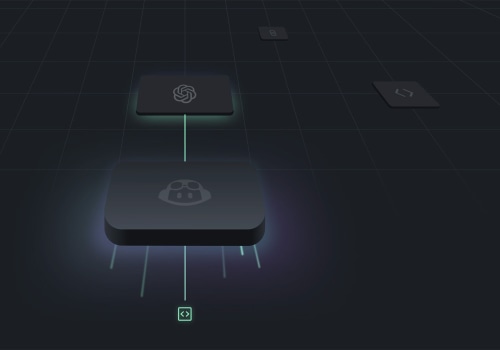The Ultimate Guide To Graphic Design: Everything You Need To Know
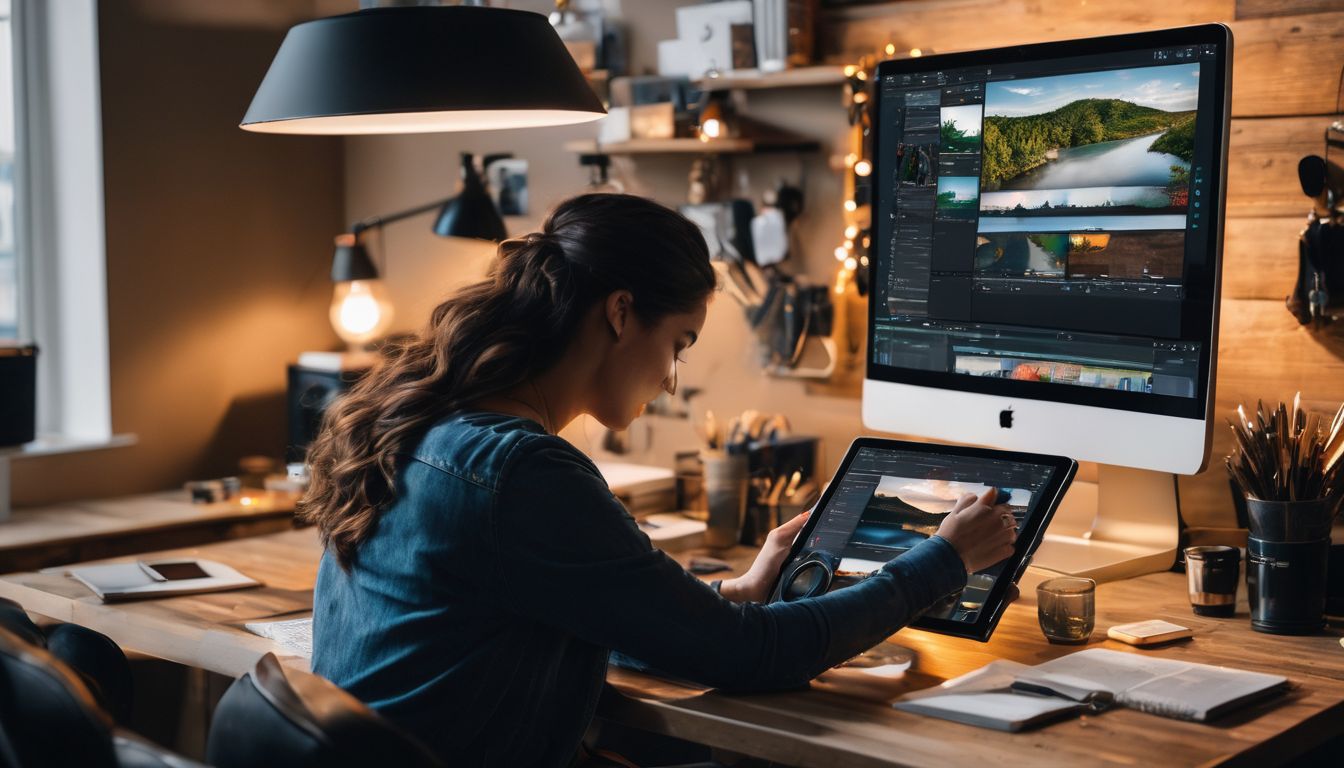
Struggling to make your mark with standout designs? Graphic design is more than just pretty pictures; it's a potent tool for communication. Our ultimate guide will unpack the mystery of graphic design, giving you the keys to creating visuals that speak volumes.
Dive in and transform your vision into an eye-catching reality!
Key Takeaways
- Graphic design is key to communication, sharing ideas with visuals like logos and websites. It uses elements like colour and shape to create balance, contrast, and form.
- Designers use tools such as Photoshop for editing photos, Illustrator for drawings, and InDesign for layouts. They need creativity, technical skills, and good communication to make great designs.
- Branding makes companies known by their looks; marketing uses design to tell what they offer. A good user experience on websites keeps people happy.
- New trends include minimalism, which is simple but strong; responsive design that works on all devices; and parallax scrolling, which adds depth to web pages.
- Mixing old art ways with new tech creates fresh styles in graphic design. This helps designers be original and meet what customers want.
Understanding the Basics of Graphic Design
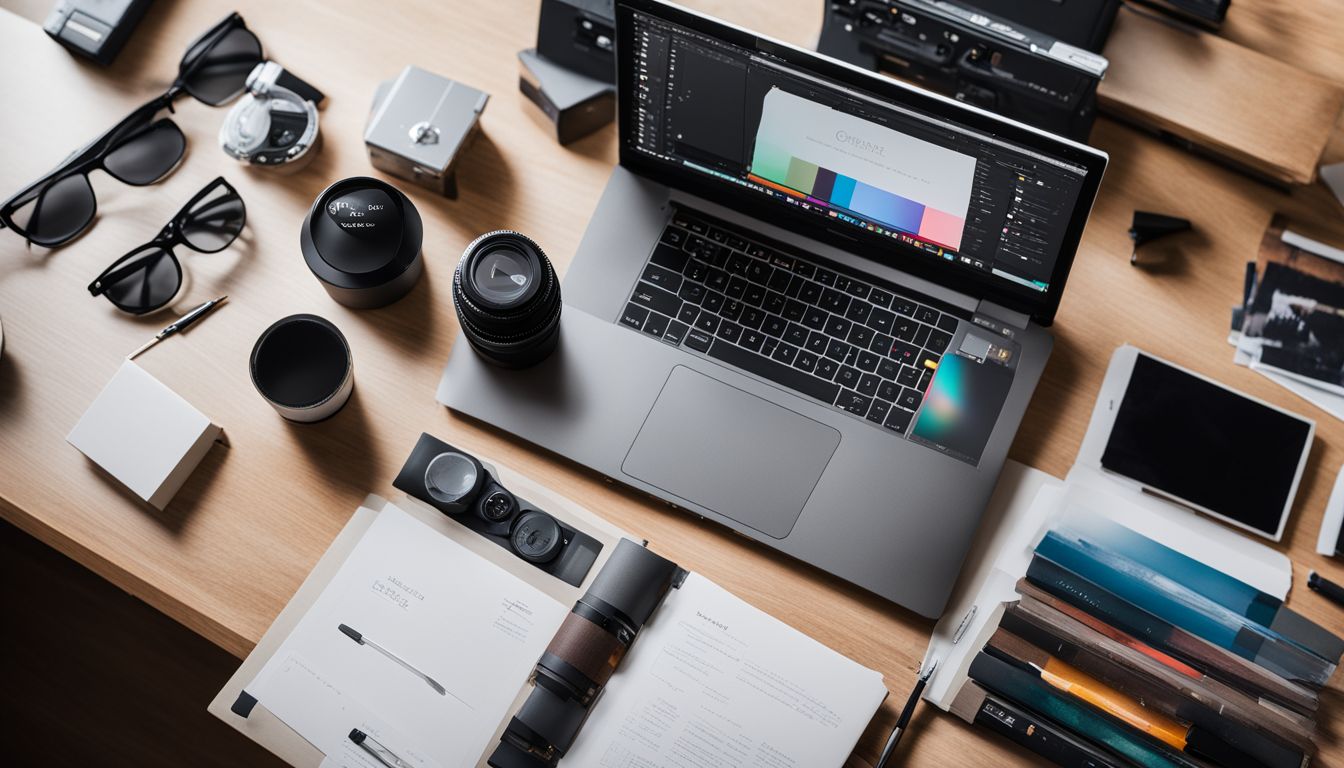
Learn about the essential elements and principles of design, as well as the tools and software commonly used in graphic design. Gain insight into the graphic design process to get a better understanding of how designers bring their ideas to life.
https://www.youtube.com/watch?v=dFSia1LZI4Y
Elements and Principles of Design
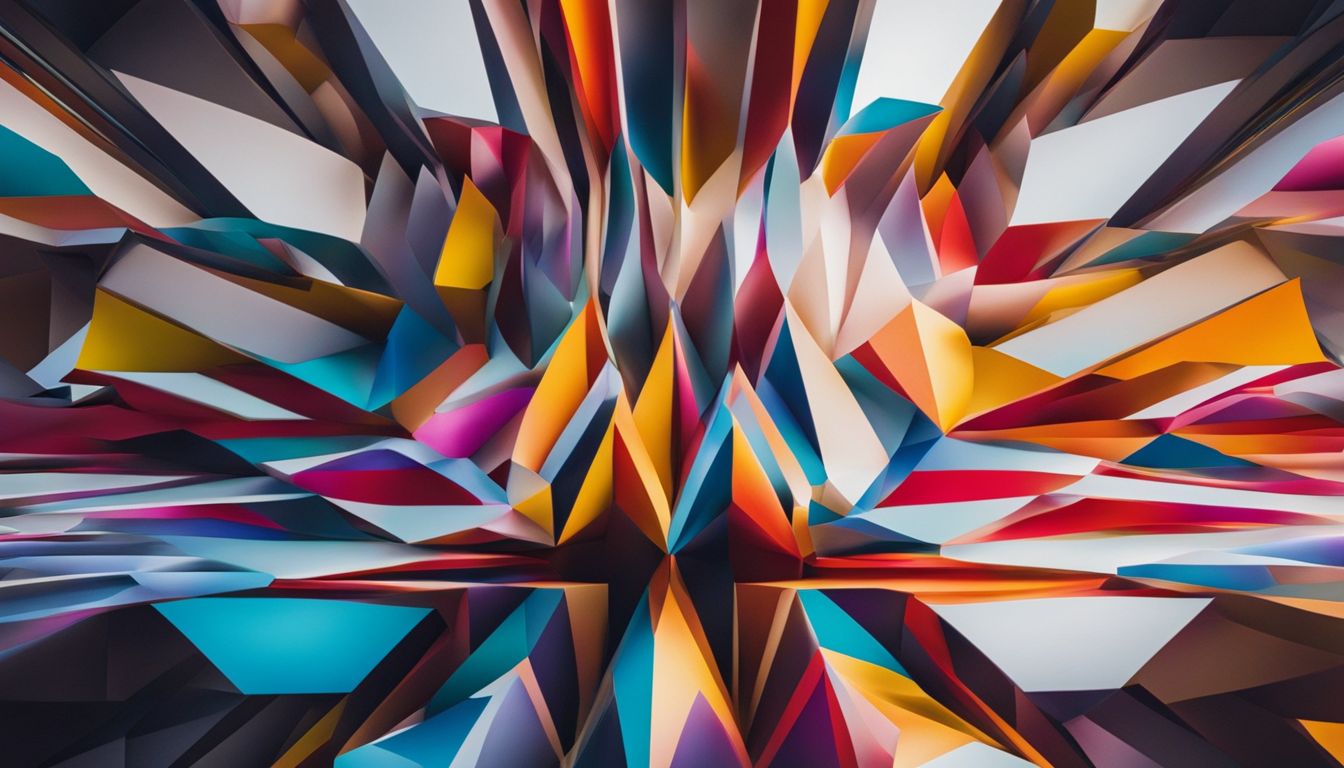
Graphic design uses elements and principles as if they are tools to craft the desired appearance. Elements such as colour, shape, line, texture, space, and form assist graphic designers in creating striking logos, websites, and other impressive work.
They blend these elements together to convey a specific message.
The principles of design are guidelines for effectively employing these elements. Balance gives a design a sense of stability and appeal. Contrast helps highlight key features by making them more noticeable.
Alignment ensures everything is orderly, contributing to a tidy look. Repetition solidifies a brand's identity through consistent details used across various items. Designers also utilise proximity to place related content close by, which aids in comprehension.
Tools and Software for Graphic Design
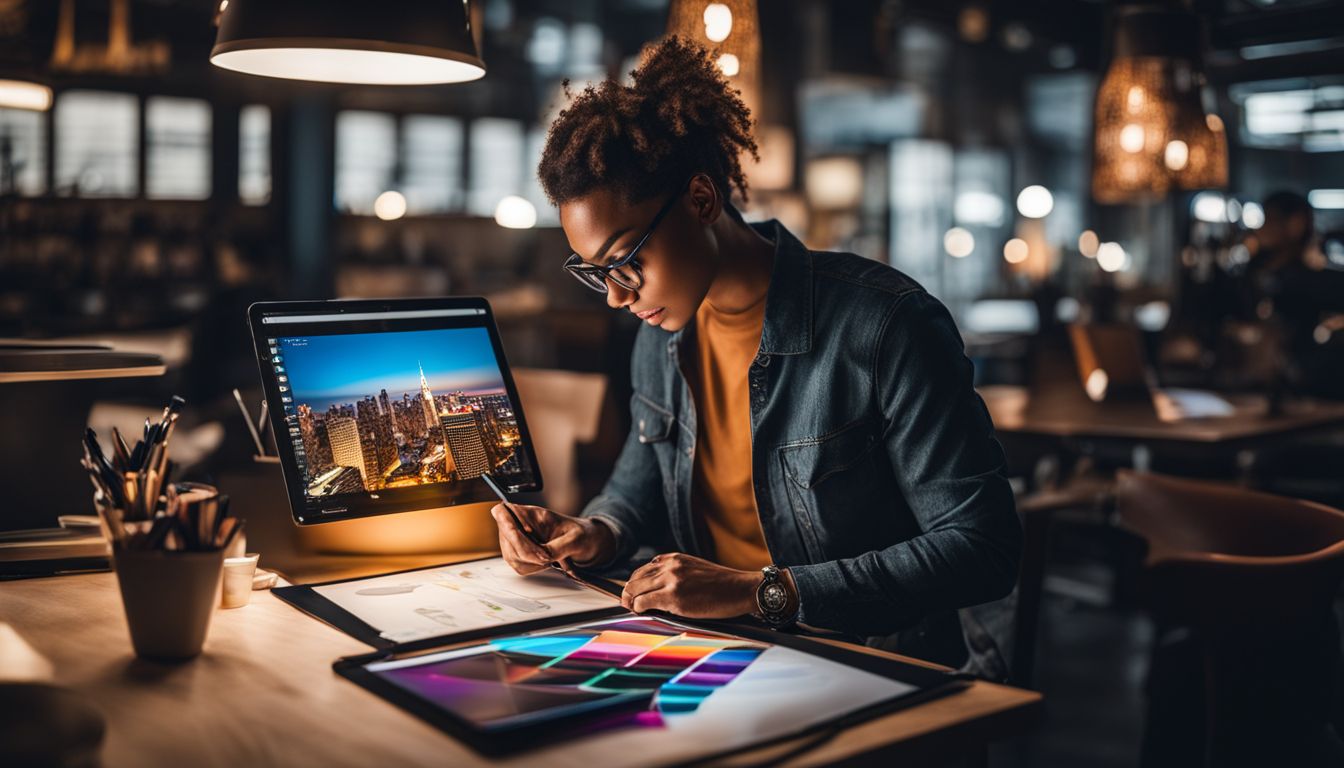
Graphic designers work with a range of tools and software to create stunning visuals. They use programmes like Photoshop to edit photos and enhance their appearance. Illustrator is another important programme for drawing illustrations and crafting logos.
InDesign helps in organising the layout for pages, books, or advertisements, making sure text and images sit well together.
For web design projects, software such as Sketch or Adobe XD comes in handy. These help plan out the look and function of websites before they're made live. Additionally, there are tools specifically for selecting fonts and colours.
With these technologies at their fingertips, designers can tackle challenges, convey stories through graphics, and ensure people have a pleasant experience on the internet or their mobile devices.
Graphic Design Process
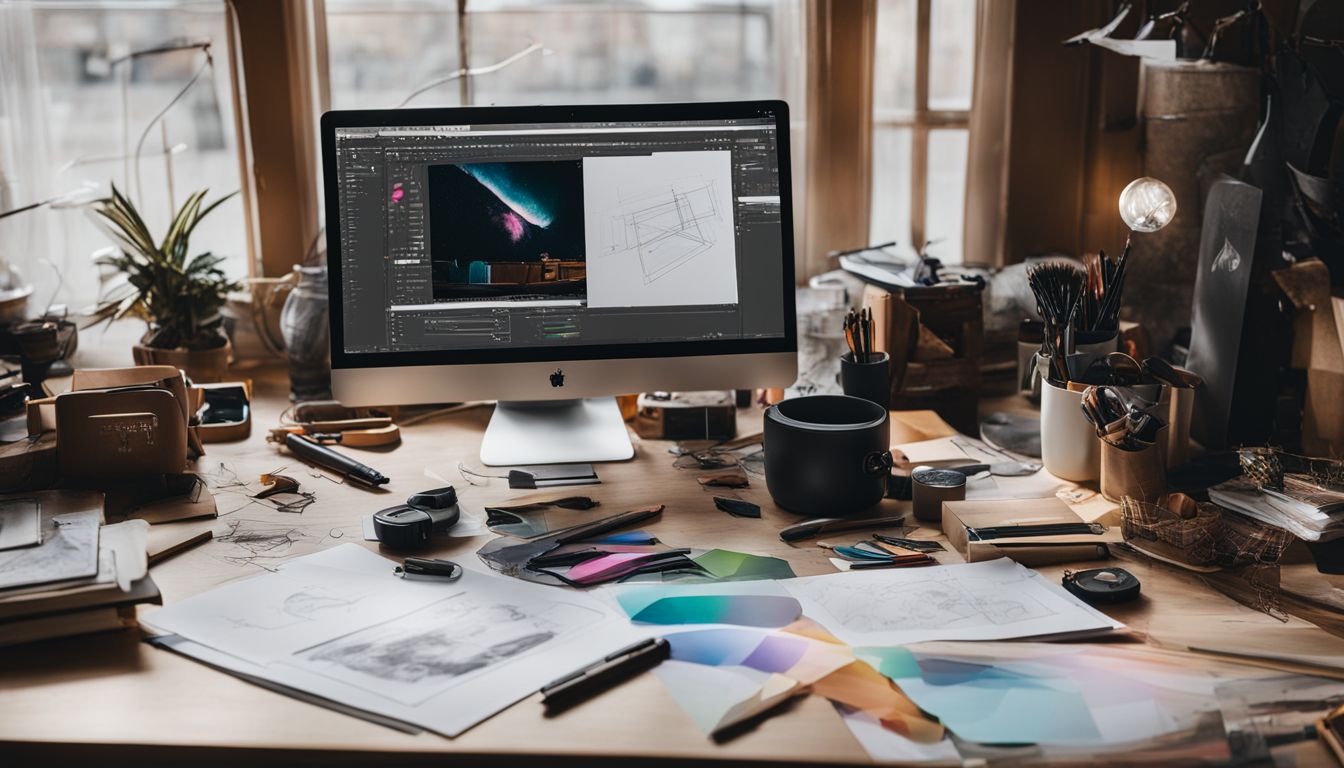
Creating top-notch designs begins with careful planning. Graphic designers collect details and pose questions to grasp the challenges at hand. They consider who will interact with the design and its purpose.
Next, they sketch out their ideas and create wireframes or initial drafts to visualise their concepts.
Designers select colours, fonts, images, and arrangements that complement each other. They employ software tools to turn their sketches into polished works that are both appealing and user-friendly.
Often, they present their work for critique and adjust it as necessary. Ultimately, graphic artists produce something practical that effectively conveys a story or message through creative means.
Essential Skills for Graphic Design

Graphic design requires a blend of creativity, technical expertise, and strong communication skills. These essential skills are vital for creating impactful designs that effectively communicate messages to the target audience.
https://www.youtube.com/watch?v=YqQx75OPRa0
Creativity and an eye for design

Being imaginative allows you to come up with new, exciting ideas for designs that grab attention. It’s about creating visuals people have not encountered before. Having a keen eye for design is important, as it enables you to identify what looks appealing and what does not.
This ability lets you combine colours, shapes, and text styles to craft web pages that really pop.
You need both of these talents in graphic design to tackle problems and convey stories through imagery. Whether crafting a logo or an entire website, your creations should communicate with the audience and provide them with an exceptional encounter with art and design.
These talents assist customers in delivering their message in a manner that's straightforward and memorable.
Technical expertise

To create stunning visuals, you need solid technical abilities. This involves mastering software such as Adobe Photoshop and Illustrator. Plus, it's crucial to grasp concepts like colour theory and typography.
They ensure your creations are attractive and effective. Skilled designers continually pick up fresh methods and stay ahead of tech shifts.
Conversing clearly with customers, colleagues, and others involved in bringing visions to life is vital too. Hence, communication and teamwork are extremely important in the world of graphic design!
Communication and collaboration

Graphic designers must communicate effectively and collaborate with others. They exchange thoughts with clients, heed feedback, and adjust their designs accordingly. Such teamwork leads to the creation of solid brands and impactful advertisements that resonate with audiences.
Being articulate is also crucial in this role. Designers have to convey their concepts clearly and grasp client requirements. They often partner up with marketing teams, writers, and fellow designers to ensure everything appears top-notch and conveys the intended message for the company or product they represent.
Using straightforward language helps all involved remain on track during projects, enabling quick problem-solving when needed.
Importance of Graphic Design in the Business World

Graphic design plays a crucial role in branding, marketing, user experience and interface design, as well as communication and storytelling. Click here to learn more about the impact of graphic design on businesses.
https://www.youtube.com/watch?v=WDhG9lPNWEQ
Branding and identity

Branding and identity are like a company's face. They share the story of who you are and what you believe in. Strong branding helps people remember and recognise your business with ease.
It includes things such as your logo, your chosen colours, and the design of your website. This shows everyone what makes your business unique.
Your brand identity can shape how customers feel about your company. When they spot your brand on advertisements or social media, they recognise it instantly without needing to read the name.
To achieve this effectively, designers collaborate with art directors to craft bold visual designs that linger in people's memories. They consider how users will experience the brand, ensuring everything looks top-notch on mobile apps or printed advertisements too.
The aim is to make a connection with potential customers so they pick you over competitors.
Marketing and advertising

Attracting people's attention and creating a strong brand identity depend heavily on effective graphic design in marketing and advertising. Companies use typography, colors, and layouts to convey their message clearly in print media or digital platforms.
Logo design is also important for branding efforts. Motion graphics are increasingly used in digital advertising to create engaging content that captures the audience's interest.
User experience (UX) design is crucial for creating pleasant interactions with users on websites and mobile applications. It ensures that users have a positive experience while interacting with the brand digitally.
User experience and interface design

Having a good user experience and interface design is really important for keeping people interested in your website. User experience (UX) is all about making the website easy to use and enjoyable, while interface design makes sure that it looks great and is easy to understand.
By putting UX and interface design first, businesses can make their customers happier and more likely to come back, which means they could end up selling more. Using responsive design, touchpoints, and user research can help create an online experience that works well for the people using it.
Graphic designers are also really important for making websites easy to use by using things like typography trends, prototyping, visual identity, editorial design, storyboards, interaction design, motion graphics designs used in video games, or multimedia content marketing strategies. These all help improve how people feel when they visit a site.
Communication and storytelling

Business Name: Webness Studios
Designing for user experience and interface is important, but communication and storytelling are equally crucial. Good graphic design should clearly communicate messages and tell a story that connects with the audience.
By using images, colours, fonts, and layout thoughtfully, designers can convey emotions, information, and brand narrative in a compelling way. Merging visual elements with storytelling techniques helps create engaging designs that have a lasting impact.
Latest Trends in Graphic Design

Explore the latest trends in graphic design, from minimalism and responsive design to typography trends and the fusion of traditional and digital techniques. Stay ahead of the curve with our comprehensive guide to what's hot in the world of graphic design.
Minimalism

In graphic design, minimalism is a popular trend that focuses on simplicity and clarity. It involves using only the essential elements to convey a message or an idea. Minimalist designs often feature clean lines, ample white space, and straightforward typography, creating a sense of elegance and sophistication.
This approach can be impactful in branding and advertising by helping companies communicate their message in a clear and memorable way. Moreover, minimalist designs also contribute to user interface (UI) design by enhancing the user experience through uncluttered layouts and intuitive navigation.
Minimalism in graphic design reflects an ongoing shift towards simplicity and functionality in various industries where visual communication plays a crucial role. Embracing this trend allows designers to create powerful visuals that resonate with the modern audience's preferences for streamlined aesthetics and usability.
Responsive design
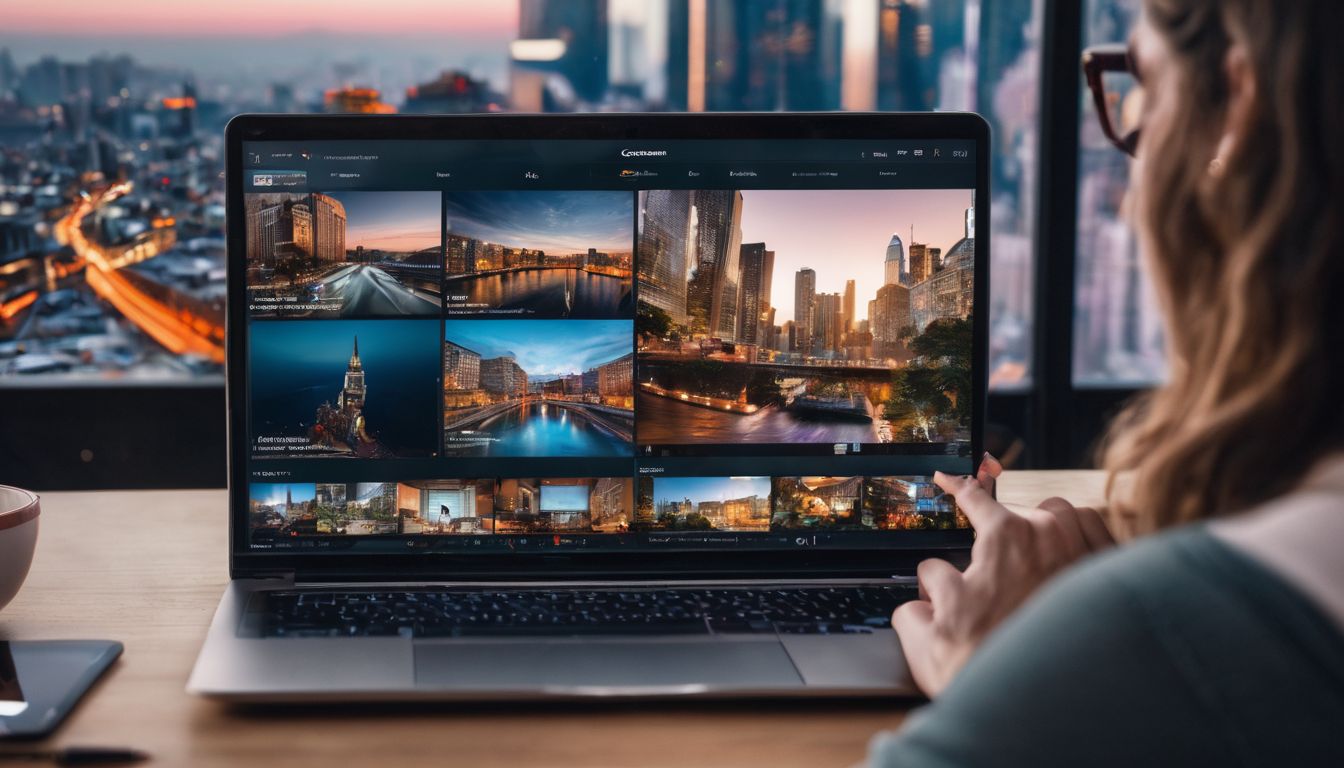
The creation of visuals is what graphic design is all about, and making those visuals adjust to various devices is known as responsive design. It's crucial for websites to appear attractive and function effectively on all screens, including phones, tablets, and computers.
This enhances the user experience and can positively impact elements such as search engine rankings.
Responsive design plays a key role in ensuring that a website looks superb and functions seamlessly on any device. In today's digital age, where more people are using mobile devices to access the internet, this is indispensable for businesses.
Parallax scrolling
 Parallax scrolling is a well-liked web design method that generates an impression of depth by moving the background at a varied speed from the foreground. It increases user involvement and brings a lively aspect to websites.
Parallax scrolling is a well-liked web design method that generates an impression of depth by moving the background at a varied speed from the foreground. It increases user involvement and brings a lively aspect to websites.Designers can captivate audiences with visually attractive and interactive storytelling experiences by using parallax scrolling, making the website more immersive and unforgettable for users.
Now, turning to "typography trends," let's consider how font styles can influence graphic design in impactful ways.
Typography trends
In graphic design, typography trends have shifted towards using bold and expressive fonts. Designers are also now experimenting with combining different typefaces to create unique designs, as well as integrating oversized lettering and dynamic typography for added impact.
Additionally, designers are exploring the combination of typography with images and graphics to enhance storytelling through seamless integration. Furthermore, responsive typography that adapts across various devices is becoming increasingly popular for ensuring optimal readability and user experience online.
Combining traditional and digital techniques.
Name: Webness Studios
Graphic design keeps changing by mixing old art methods with new digital tools to make interesting visuals. This mix lets designers blend hand-drawn things like drawings and writing with digital pictures using software such as Adobe Illustrator or Photoshop.
By combining these ways, designers can create a special look that connects with people while also using modern technology in graphic design.
This smooth joining of traditional and digital ways not only adds depth and richness to designs but also lets designers try new things, leading to different styles that interest viewers on many platforms and mediums.
FAQs
1. What is graphic design?
Graphic design is the practice of creating visual content to communicate messages. Designers use typography, pictures, and page layout techniques across many types of designs, like website designs and print ads.
2. Can I learn graphic design online?
Yes, you can learn graphic design through online courses offered by websites like Coursera.org or Udemy, which can help you gain knowledge from home.
3. Are there different types of graphic design careers?
There sure are! You can be a UI/UX designer focused on user interfaces and experiences, a motion graphic designer for animations, or work in environmental graphic design, among many other disciplines.
4. Do I need a degree to become a graphic designer?
Not always! While some jobs might require a BA degree in graphic design or similar qualifications like the National Senior Certificate in Joburg, others rely more on your portfolio and practical experience, such as internships.
5. What skills do I need for a career in graphic design?
For a career in this field, you will need creativity, an eye for detail, and aesthetic skill, but you will also need to know how to use the software used in industrial design and understand target audiences.
6. Why is learning about user experience (UX) important in web page design?
Learning UX helps ensure that websites meet users' needs effectively, which makes them stay longer on your webpage, making it a crucial part of training for interface designers.

